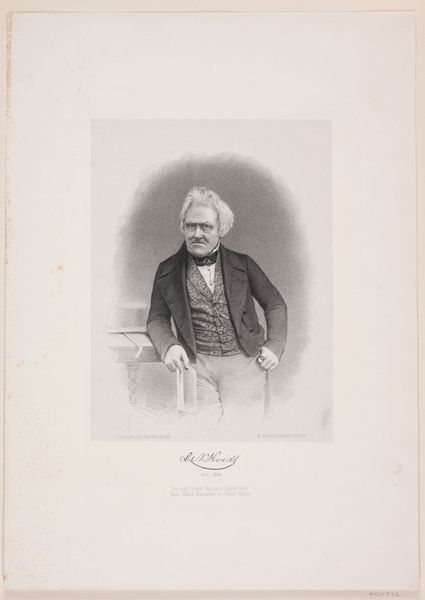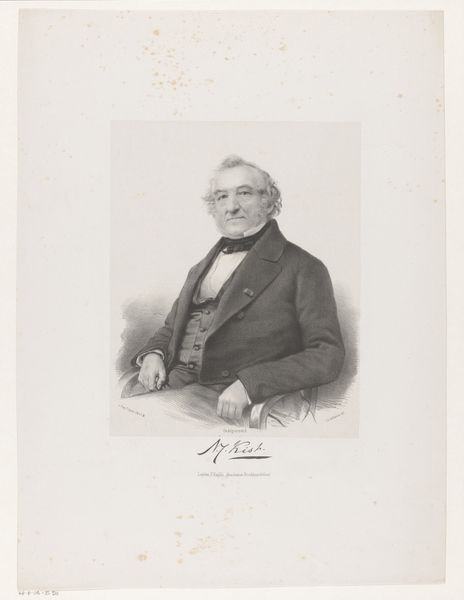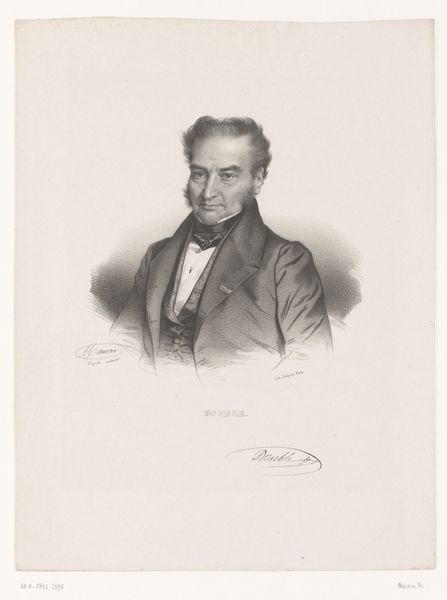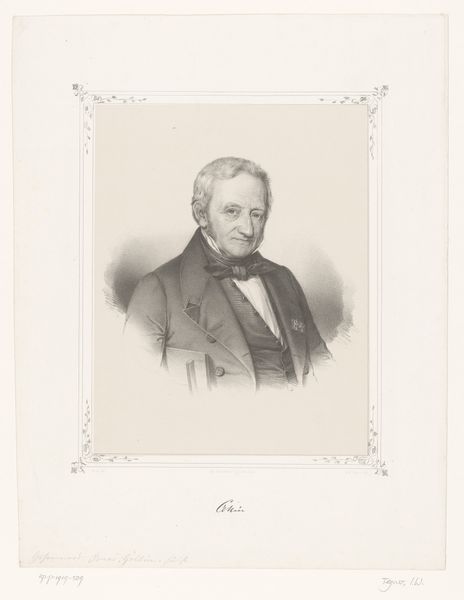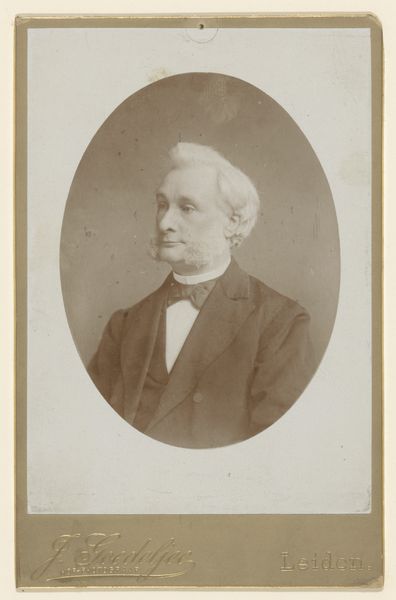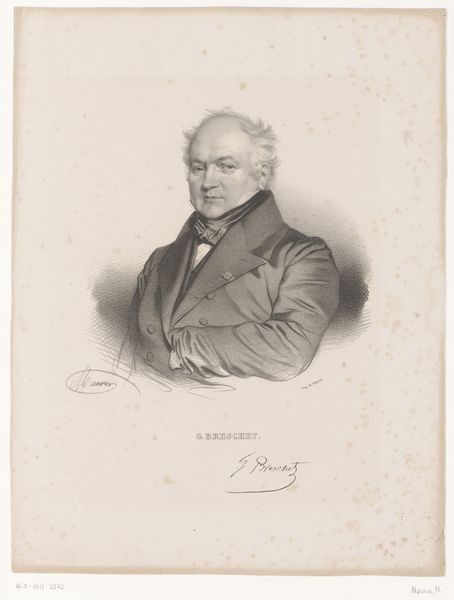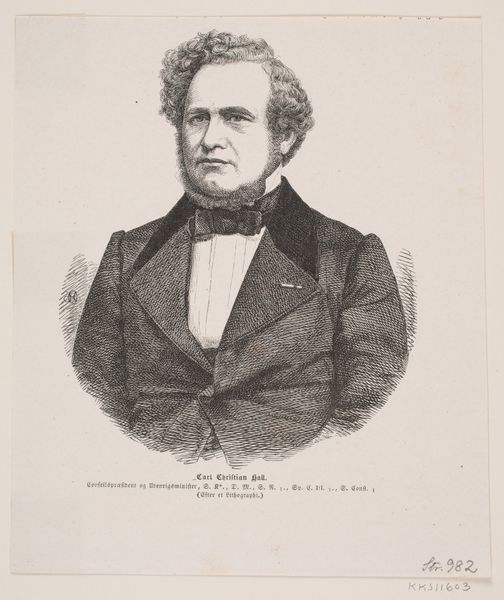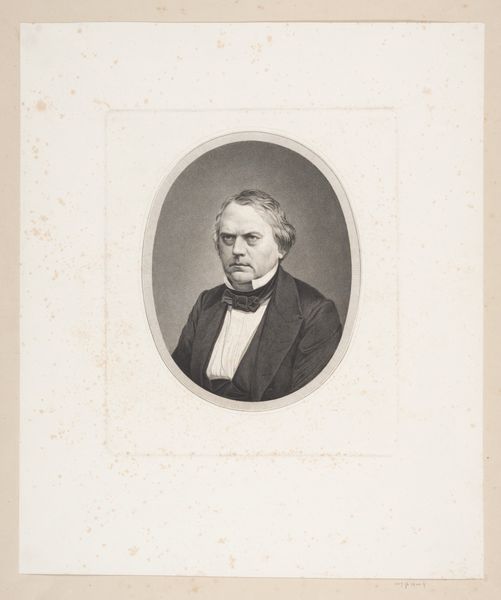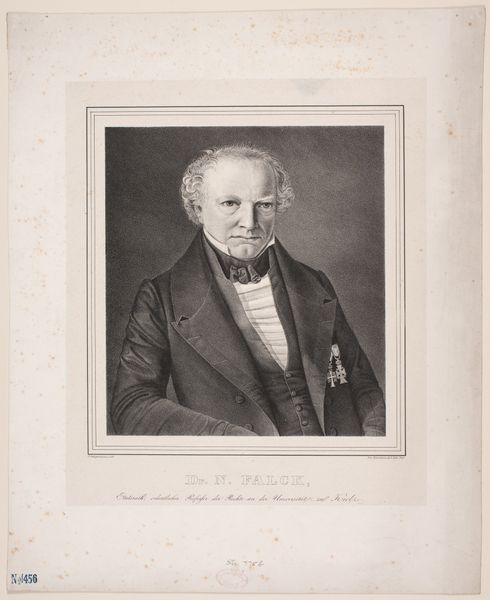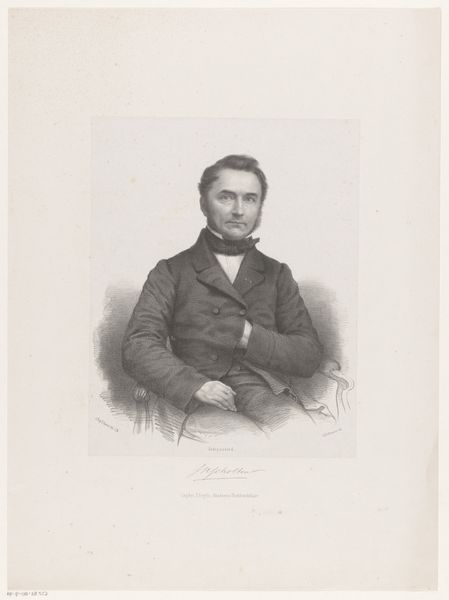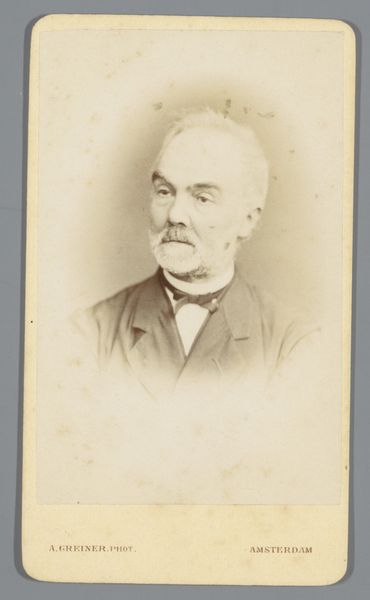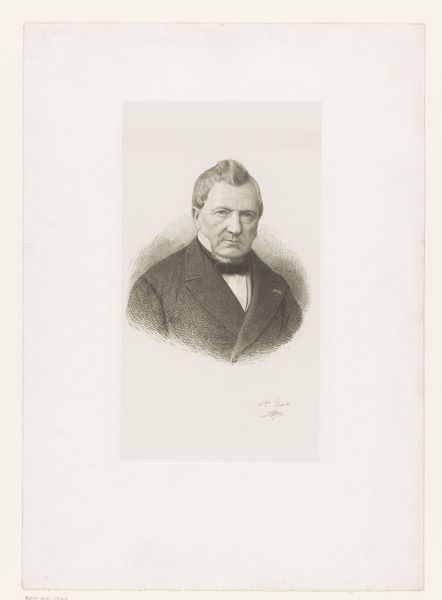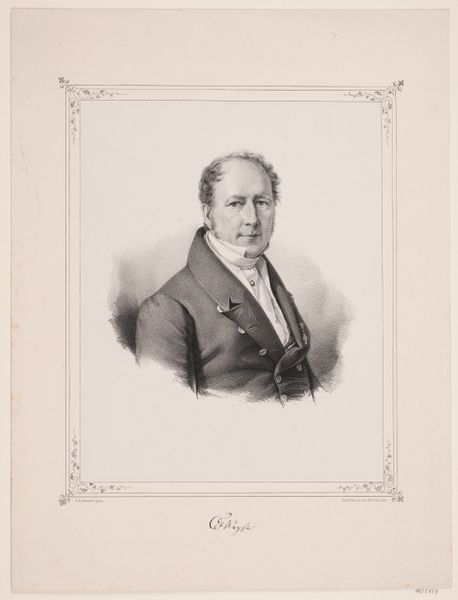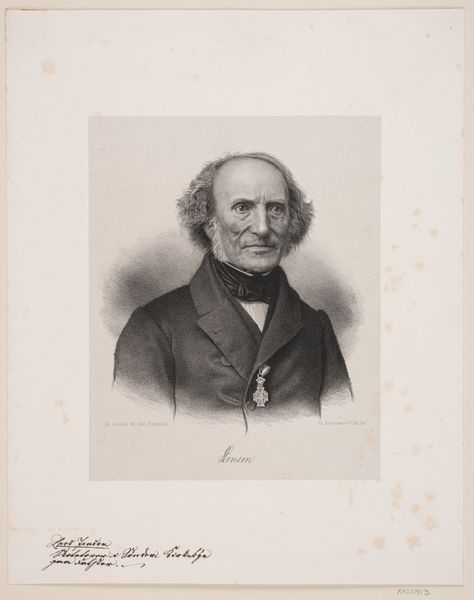
drawing, pencil, charcoal
#
portrait
#
drawing
#
charcoal drawing
#
figuration
#
pencil drawing
#
romanticism
#
pencil
#
charcoal
#
academic-art
#
realism
Dimensions: 148 mm (height) x 127 mm (width) (bladmaal)
Edvard Lehmann created this portrait of Adam Oehlenschlager using lithography, a printmaking technique, likely sometime in the mid-19th century. Lithography allowed for a relatively inexpensive reproduction of images. It democratized portraiture, making it accessible to a wider audience beyond the wealthy elite who traditionally commissioned painted portraits. The choice of portraying Oehlenschlager, a leading figure in Danish Romanticism, speaks to the growing importance of artists and intellectuals in shaping national identity. Lehmann, as an artist working within the Danish cultural landscape, likely sought to celebrate and disseminate the image of a national hero. Understanding the social and institutional context in which this portrait was made requires us to delve into the history of printmaking, the rise of nationalistic sentiment, and the role of cultural figures in 19th-century Denmark. Historians can consult archives, letters, and other printed materials to reconstruct the networks of patronage and cultural exchange that shaped the production and reception of this image. Only then can we fully appreciate the social life of this work of art.
Comments
No comments
Be the first to comment and join the conversation on the ultimate creative platform.
